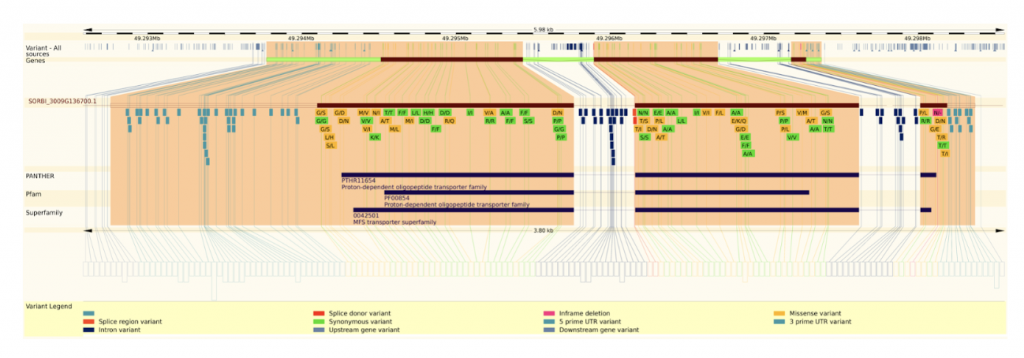Sweet sorghum [Sorghum bicolor (L.) Moench] is a valuable bioenergy and forage crop which is resistant to environmental stresses such as high salinity, drought, and flood. Osmotic stress and resulting ion toxicity are one way that salinity negatively affects plant growth in crops. However, the molecular mechanisms behind sweet sorghum varieties’ handling of ion toxicity are not well documented. Guo and colleagues from Northwest A&F University in Yangling, China evaluated the salt tolerance of the sweet sorghum cultivar “Lvjuren.”
In the study, sorghum plants were subjected to varying NaCl concentrations, revealing that the plants remained robust in the face of 50 and 100 mM treatments, showing no adverse effects on growth or photosynthesis. These sorghum plants possess an innate ability to restrict the accumulation of Na+ in their leaves, a trait known as Na+ exclusion. Notably, they also utilize leaf sheaths as reservoirs to mitigate excessive Cl− accumulation when exposed to high salt levels.
Regarding essential macronutrients, the research showed that K+ levels in leaf blades remained consistent under 50 and 100 mM NaCl conditions, reflecting the plant’s capacity to maintain K+ homeostasis. Meanwhile, NO3− levels in leaf blades remained stable across all treatment groups, underscoring the plant’s ability to maintain NO3− homeostasis even under severe salt stress conditions.
To delve into the genetic basis of ion transport and accumulation, the authors used transcriptome profiling. This analysis pinpointed specific genes responsible for Na+ retention in roots (HKT1;5), Cl− accumulation in leaf sheaths (CLCc), and NO3− homeostasis in leaf blades (NPF7.3-1). Additionally, the study identified differentially expressed transcription factors (TFs), with most of them being upregulated following salt exposure. Notably, 25 of these TFs were differentially expressed across all tissues, potentially playing pivotal roles in sorghum’s resilience to salt stress.
Furthermore, gene ontology (GO) analysis highlighted that terms related to integral components of the membrane were significantly overrepresented among genes differentially expressed under 200 mM NaCl treatment. This points to the potential involvement of these genes in regulating membrane stability, particularly in these plant regions, when subjected to high salt stress.
SorghumBase Examples:


Reference:
Guo H, Nie CY, Li Z, Kang J, Wang XL, Cui YN. Physiological and Transcriptional Analyses Provide Insight into Maintaining Ion Homeostasis of Sweet Sorghum under Salt Stress. Int J Mol Sci. 2023 Jul 3;24(13):11045. PMID: 37446223. DOI: 10.3390/ijms241311045. Read more